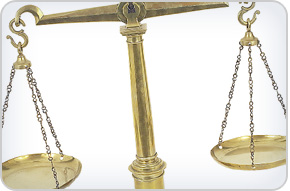
Theme 3: Fairness in TaxesLesson 1: How to Measure Fairness

Two criteria used to measure fairness in taxes are benefits received and ability to pay. Benefits received means that people should pay taxes in proportion to the benefits they receive from government goods and services. Ability to pay means that people's taxes should be in proportion to their resources. People's resources differ because they have different amounts of
|
materials:Activities
Activity 1: Tax Benefits Match the tax to the benefit received. Activity 2: Comparing Town and County Services Take a virtual fieldtrip to learn what services are provided by town government and which are provided by county government. Activity 3: What Makes Taxes Fair? Assess the fairness of different taxes and fees. Assessment
Complete the assessment page to test your understanding of How to Measure Fairness. |
| quick check |
|
What two criteria can be used to assess whether a tax is fair?
|
| tax trivia |
|
Did You Know?
The IRS, a branch of the Department of Treasury, deals directly with more Americans than any other institution, public or private. It also is one of the world's most efficient tax agencies. In 2023, the IRS collected more than $4.9 trillion in revenue, processed over 262.8 million tax returns, and provided $641.7 billion in refunds. Almost 93% of tax returns were filed electronically.
Test your tax trivia knowledge by answering the following multiple-choice question. Click on the correct answer. To assess your answer, click the Check My Answers button. |
